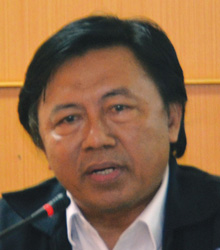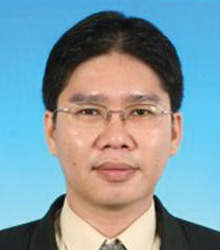Disaster Management
Keynote

Director Water Resources Center
National Hydraulic
Research Institute of
Malaysia
Big data analytics to diagnose hydro-meteorological disasters due to climate change

Regional Sales Manager S.E.A.
DigitalGlobe, Singapore
Role of DigitalGlobe Imagery in Humanitarian Assistance and Disaster Relief

Acting Senior Scientific
Officer, Hong Kong Observatory
Smart Use of GIS Platform for Delivering Weather Information and Nowcasting Services
GI for Disaster Preparedness and Risk Reduction

Officer-in-Charge
Communications, Electronics and Information Systems Division,
Office of Civil Defense, Philippines
National Information and Communications Technology Architectures for Disaster Management in Philippines

Dean
Geography Faculty
Universitas
Muhammadiyah Surakarta
Indonesia
Gis And Speleology Survey For Estimating Underground River System In Karst Region

Business Development Manager
MetaSensing,
The Netherlands
Geospatial Applications Of High-Resolution Radar Sensors in Disaster Managment
GI for Disaster Preparedness and Risk Reduction

Director
Ground Data Solutions, Malaysia
Airborne LiDAR technology for Disaster Management

Senior Research Officer Centre for Southeast Asia Disaster Prevention Research Universiti Kebangsaan Malaysia
Integrated and multi-hazard disaster management

Product Manager
SkyMap Global, Singapore
An integrated approach of information technology & smart platform towards disaster management
It is a well-known fact that Asia Pacific is the world's most disaster prone region. In just the past decade, 40 percent of the global natural disasters happened in Asia Pacific, costing the loss of half a million lives, with additional 1.4 billion people affected. These disasters have caused economic damage of more than half a trillion dollars during the same period. UN-ESCAP predicted that if the current trends are to continue, by 2030, annual losses in the region will average 160 billion dollars per year.
Governments need to rethink its approach to disasters—rather than focusing on response, greater attention should be paid to adaptation, mitigation and preparedness. Effective early warning systems and regional cooperation to share technology, information, and expertise are key to reducing disaster risk. Geospatial information can help in better understanding a complex situation and offer some tangible solutions by providing a scientific understanding of earth systems at a truly global scale and leading to more thoughtful, informed decision making.
Disaster Management programme at Geosmart Asia 2016 will bring out the applications of geospatial information and technology in the preparedness, response and mitigation phase of a disaster. Natural disasters to be discussed include earthquakes, typhoons, floods, landslides and drought.
Target Audience- Academic & Research Bodies
- City Authorities
- Consultants
- Emergency Responders
- Funding Agencies
- Geospatial Data Providers
- Geospatial Industry Experts
- IT Solutions Providers/Smart Technology Experts
- NGOs
- Policy Makers



